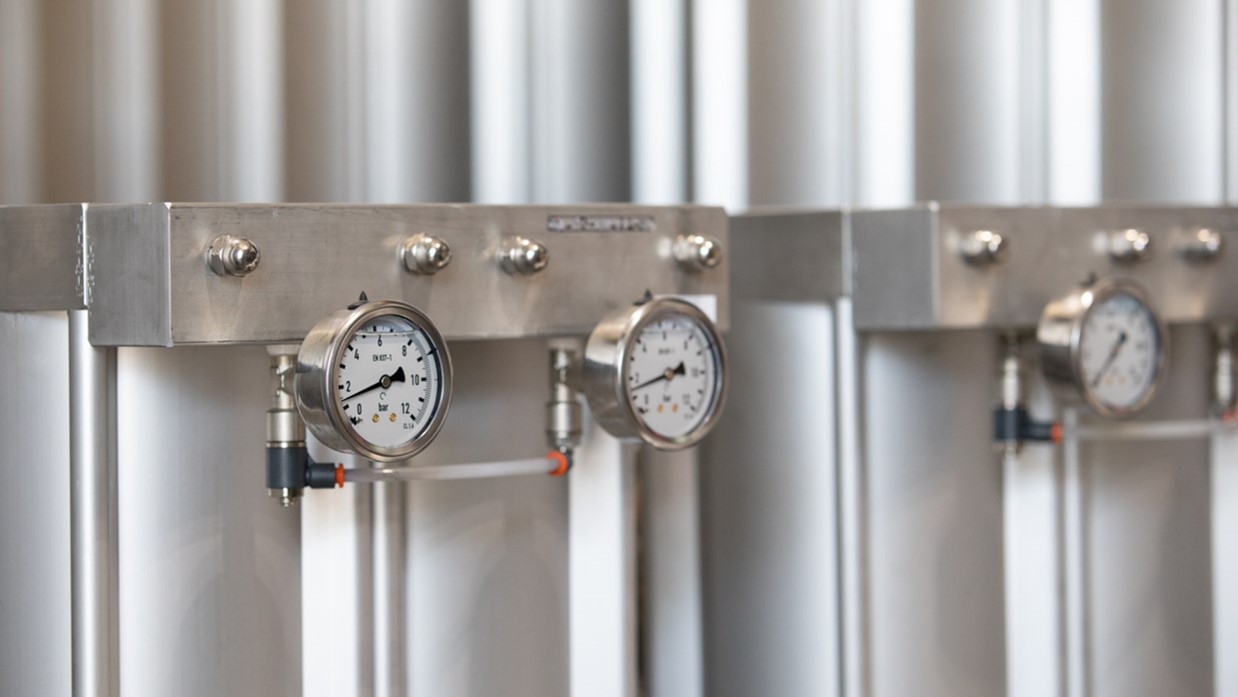What Are Refrigerant Gases? Types and prohibitions according to the F-Gas regulation
Refrigerant gases are chemical substances essential for the operation of refrigeration systems, as they facilitate the transfer of heat from the interior to the exterior of these systems. Without them, refrigeration and air conditioning would be impossible. There are different types of refrigerant gases, each with specific characteristics and applications.
Types of Refrigerant Gases
- Hydrofluorocarbons (HFCs)
HFCs are widely used due to their efficiency and low cost, although their high Global Warming Potential (GWP) makes them an environmental concern. GWP measures a gas’s ability to trap heat in the atmosphere, and a high value indicates a greater impact on global warming. - Hydrocarbons (HCs)
HCs are natural refrigerants derived from petroleum and natural gas. While they are safe and have a low GWP, their efficiency does not match that of HFCs. However, their lower environmental impact makes them an increasingly popular choice. - Hydrochlorofluorocarbons (HCFCs)
HCFCs, used for many years, are effective and have a low GWP but are harmful to the ozone layer. As a result, their use is being gradually phased out in favor of more sustainable alternatives.
The F-Gas Regulation: Towards Reducing Greenhouse Gas Emissions
The European F-Gas Regulation, updated on February 20, 2024, aims to reduce the use of fluorinated greenhouse gases (GHGs). This regulation, along with the Tax on Fluorinated Gases established by Law 16/2013, has led to a significant shift in the industry, driving the search for alternatives that are both efficient and compatible with existing refrigeration equipment.
The regulation establishes a phased reduction schedule for HFCs through a marketing quota system known as “phase down,” promoting the use of refrigerants with a lower GWP. GWP, or Global Warming Potential, is a critical measure indicating a gas’s impact on global warming: the higher the GWP, the greater the potential damage to the climate.
Natural Refrigerant Gases
Natural refrigerant gases are substances used in refrigeration systems and other applications, representing a more sustainable and environmentally friendly option compared to traditional synthetic gases like CFCs, HCFCs, and HFCs, which contribute to global warming and ozone layer depletion. These natural refrigerants are not only more eco-friendly but also possess efficient thermodynamic properties, making them a viable and responsible choice for the future.
GasN2 Technology: Innovation in Sustainable Refrigeration
At GasN2, we have developed a range of refrigeration products designed for various sectors, such as the food and chemical-pharmaceutical industries. Our technology combines the best aspects of mechanical and cryogenic cooling for refrigeration and freezing applications, using natural refrigerant gases with a GWP close to zero.
Features of GasN2 Cold Plants
GasN2 systems are based on direct compression and expansion with semi-hermetic compressors, optimizing cold distribution through secondary fluid exchange for distribution in chambers or dynamic tunnels. They are environmentally friendly, using natural refrigerants with a GWP and ODP (Ozone Depletion Potential) of 0. Additionally, they require no consumables and maintain a minimal gas charge, maximizing energy efficiency.
The plants can be air-cooled (with V-shaped condensers) or water-cooled, with outdoor installation options and a power range from 15 kW to 150 kW, operating at evaporation temperatures as low as -85 °C. The plant layout can be compact with integrated electrical panels and condensers or remote. The innovative technology includes leak detection systems, cold installation safety devices, and an integrated GasN2 control system with remote and predictive control, and exclusive platforms for each client, minimizing maintenance tasks and improving temperature control in rooms and chambers.
Benefits of the Production Process
Reducing freezing time optimizes process efficiency, allowing for faster cooling. It preserves the product’s organoleptic properties, preventing tissue rupture, weight loss, or color changes. It ensures reduced energy consumption, translating to lower operational costs and a minimized carbon footprint. GasN2 offers an innovative solution that not only meets current regulations but also enhances the sustainability of industrial refrigeration processes, significantly contributing to reducing the carbon footprint.

